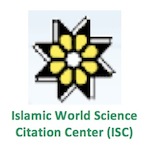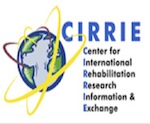Introduction
The age of onset of aging in Iran is 60 years old [1]. In the next 40 years, the world's population over the age of 65 will double, with 52% in Asian countries and 40% in developed countries. The development of societies, increasing life expectancy and reducing fertility in the world, are among the factors causing the phenomenon of aging in the world and in Iran. According to WHO statistics, there were about 600 million elderly people in the world in 2000. This number will reach 2 billion by 2050 [2]. Iran's population has doubled in the last 60 years, the number of elderly people has increased 6 times, the number of elderly people in urban areas has increased 9 times and in rural areas it has doubled [3]. The unwillingness of the family to care for the elderly, special social conditions such as urbanization, modernism, changes in traditional values, the contradiction of the value system of the new and old generation have caused the family to not be able to properly fulfil their roles and responsibilities to the elderly. This can put the elderly at risk of abuse by family members [4].
Elderly abuse means inflicting pain by committing a harassing act or leaving a necessary act intentionally or unintentionally on one or more occasions. Abuse is one of the examples of deprivation of human rights and dignity that occurs in the form of negligence, deprivation of power, financial exploitation, psychological and physical abuse, and rejection. A person is much more likely to be abused in the family than outside the family [5,6]. Family members cause intentional or unintentional neglect by neglecting the elderly and neglecting to provide for emotional, care, and safety needs, failing to help with indoor and outdoor activities, and providing a dignified life for the elderly [7].
Different degrees of abuse have a significant effect on reducing the health and safety of the elderly [8]. Elder abuse is not a new issue and is considered as one of the major public and social health problems in the world [9]. Social support depends on socio-economic and geographical factors in different age groups. Sometimes not reaching the stage of child maturity or accepting responsibility compulsorily, as well as the changing role of the family, existing crises, psychological pressures of modern life and weak faith weakens the social status of the elderly and causes abuse by family members towards the elderly [10].
In 2010, the National Institute on the Elderly held a scientific conference on elder abuse and recommended prioritizing research in this area. According to research results in Europe, 19.4% of the elderly aged 60-84 are exposed to psychological harassment, 2.7% to physical harassment, 0.7% to sexual harassment, 3.8% to financial harassment and 0.7% to harassment injuries [11]. Most abusers of the elderly are family members. Findings from surveys at the National Center for Elder Abuse in the United States show that 81% of abusers are family members, including children (47%), spouse (19%), grandchildren (9%), and the elderly brother or sister (65%) and two-thirds of the victims of abuse are elderly women [12].
Complications of elder abuse include decreased self-esteem, feelings of hopelessness, inadequacy, disability, and even reduced quality of life and increased mortality [13]. In Europe, the rate of abuse of the elderly at home is estimated at 67% to 73.3% of all cases of abuse of the elderly [14,15]. According to a study in Iran, 25.9% of the elderly have experienced at least one type of abuse.
With the prevalence of old age, various chronic diseases such as heart disease, diabetes, dialysis, etc. may affect patients. These diseases can cause various challenges for patients, from changing laboratory indicators to changing the health status of patients. Paying attention to the elderly as a vulnerable group, increasing their number and increasing the phenomenon of elder abuse in societies, intervention and accurate and correct planning to reduce elder abuse is necessary. The aim of this study was to determine the effect of appropriate treatment package for the elderly on the incidence of abuse of family members with the elderly.
Materials and Methods
The experimental study was a pretest-posttest with a control group. 92 elderly people living in the villages of Ivan city in 1398 were selected by stepwise cluster sampling method. Inclusion criteria for the elderly include age 60 and older, ability to answer questions, no serious hearing problems, no mental illness and cognitive impairment score 6 or higher on the Persian version of the short cognitive status test), satisfaction The elderly were consciously involved in the study and did not participate in other studies. Inclusion criteria for family members included: One of the family members who had the most contact with the elderly, conscious consent to participate in research and not to participate in other studies. Exclusion criteria included transfer of the elderly to a nursing home, unwillingness to continue participating in the research project, incomplete answer to the questionnaire, and the absence of more than two sessions of the elderly family member in training classes.
After explaining the objectives of the study orally to the participants and their families, a written consent form was completed and coordinated for the intervention. The demographic information form and the "Abuse of the Elderly in the Family" questionnaire were completed through face-to-face interviews with the elderly. This questionnaire was designed by Majideh Heravi Karimovi et al. (2009) in accordance with the culture of Iranian society [16]. It includes 49 terms in 8 subscales of care neglect, psychological abuse, physical abuse, financial abuse, disenfranchisement, rejection, financial neglect, and emotional neglect. Scores range from 0 to 100, and a higher score indicates a higher rate of abuse symptoms. The average time required to complete each questionnaire was 30 minutes.
After completing the questionnaires, the intervention was performed in a group of 46 people. The training package included communication with the elderly and keeping them in the family, adhering families to the culture of respect for the elderly and observing etiquette to prevent abuse and harassment of the elderly. The content of these packages was designed in such a way that it could reduce all 8 subscales of the questionnaire. 8 training sessions were held in the health centers of Ivan city in two intervention groups of 23 people and in the morning shift for two hours during 8 weeks. Each week, practical assignments were given to the family members participating in the study to apply the training. During the week, the researcher followed up on homework by telephone.
One week after the intervention, post-test was performed for both control and test groups. The effects of the training package on the mean of the questionnaire subscales were analyzed by descriptive statistics and McNemar, paired and independent t-tests and analysis of covariance in SPSS-22 software. Significance level was considered 0.05.
Findings
The experimental study was a pretest-posttest with a control group. 92 elderly people living in the villages of Ivan city in 1398 were selected by stepwise cluster sampling method. Inclusion criteria for the elderly include age 60 and older, ability to answer questions, no serious hearing problems, no mental illness and cognitive impairment score 6 or higher on the Persian version of the short cognitive status test), satisfaction The elderly were consciously involved in the study and did not participate in other studies. Inclusion criteria for family members included: One of the family members who had the most contact with the elderly, conscious consent to participate in research and not to participate in other studies. Exclusion criteria included transfer of the elderly to a nursing home, unwillingness to continue participating in the research project, incomplete answer to the questionnaire, and the absence of more than two sessions of the elderly family member in training classes.
After explaining the objectives of the study orally to the participants and their families, a written consent form was completed and coordinated for the intervention. The demographic information form and the "Abuse of the Elderly in the Family" questionnaire were completed through face-to-face interviews with the elderly. This questionnaire was designed by Majideh Heravi Karimovi et al. (2009) in accordance with the culture of Iranian society [16]. It includes 49 terms in 8 subscales of care neglect, psychological abuse, physical abuse, financial abuse, disenfranchisement, rejection, financial neglect, and emotional neglect. Scores range from 0 to 100, and a higher score indicates a higher rate of abuse symptoms. The average time required to complete each questionnaire was 30 minutes.
After completing the questionnaires, the intervention was performed in a group of 46 people. The training package included communication with the elderly and keeping them in the family, adhering families to the culture of respect for the elderly and observing etiquette to prevent abuse and harassment of the elderly. The content of these packages was designed in such a way that it could reduce all 8 subscales of the questionnaire. 8 training sessions were held in the health centers of Ivan city in two intervention groups of 23 people and in the morning shift for two hours during 8 weeks. Each week, practical assignments were given to the family members participating in the study to apply the training. During the week, the researcher followed up on homework by telephone.
One week after the intervention, post-test was performed for both control and test groups. The effects of the training package on the mean of the questionnaire subscales were analyzed by descriptive statistics and McNemar, paired and independent t-tests and analysis of covariance in SPSS-22 software. Significance level was considered 0.05.
Findings
According to the results of Chi-square test, there is no statistically significant difference in terms of age, sex, religion and level of education in the three categories of primary, secondary and university between the two groups of elderly test and control and both groups are identical in terms of the mentioned indicators. Significance levels for each of the indicators are given in table 1.
Table 1: Comparison of age, sex, religion and education of the elderly in test and control groups using Chi-square test.
| Variable |
Group |
Test group (percentage) number |
Control group (percentage) number |
P |
| Age |
60-70 |
30(66.7) |
33(77.1) |
0.501 |
| 71-80 |
12(24.8) |
8(15.7) |
0.271 |
| 81-90 |
4(8.5) |
5(10.8) |
0.788 |
| Gender |
Male |
24(52.5) |
23(50) |
0.97 |
| Female |
22(47.8) |
23(50) |
0.835 |
| Total |
46(100) |
46(100) |
- |
| Religion |
Muslim |
46(100) |
46(100) |
1 |
|
illiterate |
30(65.2) |
33(77.1) |
0.501 |
|
Primary |
9(19.6) |
8(17.5) |
0.788 |
|
Secondary |
6(13) |
5(10.9) |
0.748 |
| Education |
University |
1(2.1) |
0 |
1 |
|
Total |
46(100) |
46(100) |
- |
Statistical studies using chi-square test showed that there was no statistically significant difference in terms of marital and living status variables between the two elderly groups of test and control. Also, the significance level for each index is shown in table 2.
Table 2: Comparison of employment, marriage and living conditions of the elderly in control and test groups using chi-square test.
| Variable |
Group |
Test group (percentage) number |
Control group (percentage) number |
P |
| Employment |
Housewife (women) |
22(47.8) |
21(45.7) |
0.974 |
| Employed |
13(28.3) |
2(4.3) |
0.002 |
| Retired |
2(4.3) |
12(26.1) |
0.004 |
| Unemployed |
9(19.6) |
11(23.9) |
0.613 |
| Total |
46(100) |
46(100) |
- |
| Marital status |
Married |
34(73.9) |
40(87) |
0.115 |
| Death of wife |
10(21.7) |
6(13) |
0.271 |
| divorced |
2(4.3) |
0(0) |
0.153 |
| Total |
46(100) |
46(100) |
- |
| Living condition |
single |
2(4.3) |
0(0) |
0.153 |
| with wife |
30(65.2) |
37(80.4) |
0.101 |
| With children |
14(30.4) |
9(19.6) |
0.229 |
| Total |
46(100) |
46(100) |
- |
Based on statistical analysis using chi-square test, there is no statistically significant difference in terms of residence status and chronic diseases of the elderly between the experimental and control groups, but the two groups have a statistically significant difference in some variables of financial status. showed. Also, the significance level for each index is shown in table 3.
Table 3: Comparison of residence status, economy (financial) and chronic diseases of the elderly in control and test groups.
| Variable |
Control group (percentage) number |
Test group (percentage) number |
p-value |
| Residence |
2(4.3) |
0(0) |
0.153 |
| 44(95.7) |
46(100) |
0.89 |
| 46(100) |
46(100) |
- |
| Economic situation (financial) |
3(6.5) |
8(17.4) |
0.108 |
| 8(17.4) |
5(10.9) |
0.369 |
| 28(60.9) |
13(28.3) |
0.002 |
| 7(15.2) |
20(43.5) |
0.003 |
| 46(100) |
46(100) |
- |
| Existence of chronic diseases |
20(43.5) |
15(32.6) |
0.283 |
| 26(56.5) |
31(67.4) |
0.45 |
| 46(100) |
46(100) |
- |
Statistical studies using chi-square test showed that the elderly in the two groups did not have a statistically significant difference in terms of indicators of drug use, health insurance, smoking, drugs and alcohol. Also, the level of significance for each index is shown in table 4.
Table 4: Comparison of health insurance status, drug use, smoking, drugs and alcohol in the elderly in the two control and test groups.
| p-value |
Group |
(Percentage) numbercontrol group |
Exam group (Percentage) number |
Variable |
| Taking medication |
Yes |
21(45.7) |
19(41.3) |
0.674 |
| No |
25(54.3) |
27(57.8) |
| Insurance |
Yes |
41(89.1) |
38(82.6) |
0.369 |
| No |
5(10.9) |
9(17.4) |
| Smoking |
Yes |
5(10.9) |
2(4.3) |
0.238 |
| No |
41(89.1) |
44(95.7) |
| Drug use |
Yes |
3(6.5) |
0(0) |
0.078 |
| No |
43(95.5) |
46(100) |
| Alcohol consumption |
Yes |
0(0) |
0(0) |
1 |
| No |
46(100) |
46(100) |
Table 5 shows the demographic characteristics of the family members of the elderly in the experimental group. The majority of them were women (63%), Shiites (100%), with university education (61%), housewives (63%) and single (63%).
Table 5: Demographic characteristics of elderly family members of the experimental group .
| Variable |
Group |
Group |
N (%) |
| Age |
30-20 years |
30-20 years |
30(65) |
| 40-30 years |
40-30 years |
16(35) |
| Gender |
Female |
Female |
29(63) |
| Man |
Man |
17(37) |
| Religion |
Shia |
Shia |
46(100) |
| Education |
Secondary |
Secondary |
18(39) |
| University |
University |
28(61) |
| Employment |
housewife |
housewife |
29(63) |
| Employed |
Employed |
17(37) |
| Total |
Total |
46(100) |
| Marital status |
Married |
Married |
13(28.3) |
| Single |
Single |
29(63) |
| Death of wife |
Death of wife |
1(2.2) |
| divorced |
divorced |
3(6.5) |
| Smoking |
yes |
has it |
3(6.5) |
| does not have |
does not have |
43(93.5) |
| Drug use |
yes |
has it |
0(0) |
| does not have |
does not have |
46(100) |
| Alcohol consumption |
yes |
has it |
0(0) |
| does not have |
does not have |
46(100) |
Discussion
Chronic diseases have negative effects on patients' health [17]. In old age, the patient may develop Alzheimer's disease, which can lead to abuse. The phenomenon of elder abuse has recently emerged as an important challenge in the field of elderly care and a growing societal problem that threatens the survival and quality of life of the elderly [18]. Considering that extensive studies have been conducted on several indicators related to the behavioral interaction of families with the elderly in urban areas, it seems that few studies have been conducted to examine the indicators. Emotional, care and financial negligence as well as deprivation of the elderly by the family and other indicators have taken place in rural areas. Given that the demographic characteristics and lifestyle of the elderly and their families in rural areas may be different from life in urban areas, it is necessary that this study to determine some factors related to elder abuse in Family in rural areas to be done.
The results of the present study on the emotional neglect of the family from the elderly showed that the provision of an educational package can be associated with a significant reduction in this index, so that the rate of this index from 55.4
(before intervention) to the rate decreased by 23.9 14 14%. Also, a significant difference was observed after the intervention in the experimental group compared to the control group. In this regard, the study of Vaezi et al. In 1397 showed that the rate of abuse in the dimension of emotional neglect has decreased from 42% before the intervention to 2% after the educational intervention, the results of which are consistent with the present study. Descriptive-analytical study of Heravi Karimovi et al. In 2011 showed that the rate of family abuse towards the elderly in the dimension of emotional neglect is 17.4%, the results are not consistent with the present study, which can be due to cultural differences. And the social life of the elderly in urban areas with rural areas.
The results of the present study on the level of neglect of family care for the elderly showed that educational intervention can be associated with a significant reduction in this index, so that the rate of this index from 23.6 7 7.7 before the intervention Decreased by 11.3 Nouri et al. In 2013 showed that emotional negligence, care neglect and psychological abuse have the highest rate of negligence. A 2016 study by Rana et al. Found that older adults who were abused and neglected were more likely to experience depression, anxiety, and suicidal ideation.
The results of this study on the rate of family financial neglect of the elderly showed that the educational intervention was associated with a significant reduction in the index of family financial neglect of the elderly in the experimental group. In the study of Vaezi et al. In 1397, it was shown that the rate of financial negligence of the family from the elderly before the intervention decreased by 28.7% to 2.5% after the intervention, the results of which are consistent with the present study. A study by Nouri et al. In 2012 showed that the abuse of the elderly in the family in the dimension of care neglect is 33.6% and in the dimension of financial negligence is 29.1%.
The results of the present study in the field of family deprivation of the elderly in the experimental and control groups before the intervention were 12.2% and 6.5%, respectively, and after the intervention were 5% and 7.3% and were not significant. In the study of Karimovi et al. (2012) it was 10% which is consistent with the present study. In the study of Vaezi et al. In 2016, which was conducted with the aim of the effect of implementing the program of honoring the elderly in families on the rate of abuse of the elderly in Yazd, the rate of deprivation of the elderly by the family before the intervention was 12.5%, has reached 4%, which is in line with the present study.
The results of the study showed that the cause of psychological abuse was the second highest number of cases of domestic abuse in the elderly. There was a statistically significant difference between the effect of intervention presentation of educational package on the variable of psychological abuse of the family with the elderly, but there was no statistically significant difference between the experimental and control groups after the intervention. In this regard, the study of Vaezi et al. showed that the educational intervention has reduced psychological abuse from 22.18% before the intervention to 1.25% after the intervention. Nasiri et al. (2013) in their study reported a rate of psychological abuse of 53.3%. Rahimi et al. (2016) in their study as the second most common case of family abuse of the elderly as psychological abuse.
The results of the study showed that no physical abuse of the elderly in the family was observed in the experimental group and in the control, group was 1.7%. In the study of Vaezi et al. 3.12% and in the optical study and Et al. 2.8% and Heravi et al. 4.7% and Burji et al. In rural areas 1.5% and in the study of Skirbekk et al. (2014) this rate was reported to be 3.5% that the results of these studies are in line with the present study.
The results of the present study on the variable of family financial abuse towards the elderly showed that no statistically significant difference was observed in both experimental and control groups. In the study of Heravi et al. (2012) the rate of financial misconduct is 7.9% This rate is reported in the study of Skirbekk et al. (2014) 5.4% and in the study of Amstadter et al. (2011) 6/6% reported that are consistent with the results of our study.
The results of the present study on the variable of family rejection by the elderly in the experimental group showed that no abuse was observed in the experimental group and in the control group 0.5% before the intervention and 1.1% after the intervention. In a cross-sectional study, Milad Borji et al. In Ilam province stated that the rate of family rejection by the elderly was 3.6% in urban areas and 8.5% in rural areas. In the study of Rouhani et al., This rate is 9.3% In the study of Nouri et al. (2012), the rate of rejection of the elderly by the family is 1.6%. The results of these studies are consistent with the present study.
It is recommended to measure the level of abuse of the elderly in centers such as hospitals, nursing homes, etc. Despite the assurance of confidentiality of information, older people often report less abuse than has been experienced, and there is always a significant difference between true and real statistics. In many societies, beliefs such as secrecy and modesty in expressing and exposing harassment, as well as the elderly's fear of losing their caregiver, the fear of declining social status, make older victims of harassment reluctant to seek help or intervention. These factors prevent the expression of violence and the receipt of assistance. It is recommended that health workers be familiar with the symptoms of elder abuse, such as depression, physical injury, and isolation, so that they can screen for the injured elderly and provide counseling and support.
Conclusion
Providing a training package on appropriate treatment of the elderly was effective in reducing some aspects of family abuse with rural elderly. It is suggested to use the mentioned educational package to change the behavior of elderly family members.
References
- Pourghane p, Rajab pour Nikfam M, Gholami Shielsar F. Analyzing the Concept of Elder Neglect in Elderly Homes Using a Three-Stage Hybrid Model. J Maz Univ Med Sci 2018; 28(166): 49-61 .
[Crossref] [Google Scholar]
- Sheykhi M T. The elderly and family change in Asia with a focus in Iran: A Sociological assessment. Journal of Comparative Family Studies 2006; 37: 583-88.
[Crossref] [Google Scholar]
- Buka P, Sookhoo D. Current legal responses to elder abuse. International Journal of Older People Nursing 2006; 1(4): 194-200.
[Crossref] [Google Scholar] [Indexed]
- Ghazal A, Mohammd T. The role of metalloendopeptidase (MEP) as a vital predictor of early diabetic nephropathy and its relationship to some other biochemical variables. Eurasian Chemical Communications 2021; 3(12): 909-920.
[Crossref] [Google Scholar]
- Shahkarami N, Nazari M, Milanifard M, Tavakolimoghadam R, Bahmani A. The assessment of iron deficiency biomarkers in both anemic and non-anemic dialysis patients: A systematic review and meta-analysis. Eurasian Chemical Communications 2022; 4(6): 463-472.
[Crossref] [Google Scholar]
- Mirzaei M, Gulseren O, Rafienia M, Zare A. Nanocarbon-assisted biosensor for diagnosis of exhaled biomarkers of lung cancer: DFT approach. Eurasian Chemical Communications 2021; 3(3): 154-161.
[Crossref] [Google Scholar]
- Vaezi A, Lotfi M, Shaker M.The effect of educational program of honoring the elderly in Families on the Level of elder abuse in Yazd 2016. Journal of Community Health Research 2018; 7(2): 74-84.
[Crossref] [Google Scholar]
- Brownell P, Heiser D. Psycho-educational support groups for older women victims of family mistreatment: A pilot study. Journal of Gerontological Social Work. 2006; 46(3-4):145-60.
[Crossref] [Google Scholar] [Indexed]
- Rana S, Siddiqui L, Siddiqui M, Devi L. Elderly Abuse, Violence and Neglect in Haryana-A Case Study. Asian Man (The)-An International Journal 2016; 10(1): 26-31.
[Crossref] [Google Scholar]
- Dong X, Simon MA, Gorbien M. Elder abuse and neglect in an urban chinese population. J Elder Abuse Negl 2007; 19(3-4): 79-96.
[Crossref] [Google Scholar] [Indexed]
- Nassiri H, Heravi Karimooi M, Jouybari L, Sanagoo A, Chehrehgosha M. The Prevalence of Elder Abuse in Gorgan and Aq-Qala Cities, Iran in 2013. SIJA 2016; 10 (4): 162-173.
[Crossref] [Google Scholar]
- Amstadter AB, Zajac K, Strachan M, Hernandez MA, Kilpatrick DG, Acierno R. Prevalence and correlates of elder mistreatment in South Carolina: The South Carolina elder mistreatmentstudy. J Interpers Violence 2011; 26(15): 2947-72.
[Crossref] [Google Scholar]
- Khalil Arjmandi R, Asharein M. Case Study of Femoral and Radial Angiography in Cardiovascular Patients. Chemical Methodologies 2021; 5(1): 1-10.
[Crossref] [Google Scholar]
- Hatefi M, Komlakh K. Investigating the effect of methylprednisolone pulse on treatment of back pain.Eurasian Chemical Communications 2022; 4(5): 366-371.
[Crossref] [Google Scholar]
- Hatefi M, KomLakh K. Investigation of the effect of Duloxetine on pain status of patients with spinal cord injuries: A systematic review of drug therapy. Eurasian Chemical Communications 2022; 4(3): 256-262.
[Crossref] [Google Scholar]
- Sadeghi Pour E, Hayati S, Khorasani M, Tabibzadeh Dezfuli S. Effect of Hbs on accuracy of pulse oximetry in blood oxygen saturation level measurement among adult patients with sickle cell disease. Eurasian Chemical Communications 2020; 2(3): 296-301.
[Crossref] [Google Scholar]
- Alghamdi S, Asif M. Role of pyridazine analogs as acetylcholinesterase inhibitor: An approach for management of alzheimer’s disease. Eurasian Chemical Communications, 2021; 3(7): 435-442.
[Crossref] [Google Scholar]
Citation: The effect of appropriate treatment package for the elderly on the abuse of rural elderly families in Eyvan city. ASEAN Journal of Psychiatry, Vol. 23(7), July, 2022; 1-8.





























